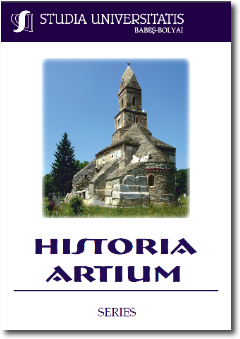LA PARTECIPAZIONE DEGLI ARCHITETTI, SCULTORI E IMPRESARI ITALIANI ALLA COSTRUZIONE DEI MONUMENTI AI CADUTI DELLA GRANDE GUERRA NELLA ROMANIA INTERBELLICA
THE PARTICIPATION OF ITALIAN ARHITECTS, SCULPTORS AND ENTREPRENEURS IN THE CONSTRUCTION OF THE HEROES’ MONUMENTS FALLEN IN THE FIRST WORLD WAR IN INTERWAR ROMANIA
Author(s): Paolo TomasellaSubject(s): Cultural history, Architecture, Visual Arts, Pre-WW I & WW I (1900 -1919), History of Art
Published by: Studia Universitatis Babes-Bolyai
Keywords: Italian emigrants; First World War; sculptors and entrepreneurs; Ettore Ferrari; Raffaello Romanelli; The Mausoleum of the Heroes of Mateiaș; Vincenzo Puschiasis;
Summary/Abstract: The Participation of Italian Arhitects, Sculptors and Entrepreneurs in the Construction of the Heroes’ Monuments Fallen in the First World War in Interwar Romania. Seasonal or permanent migration from Italian regions to Romania in the 19th and 20th centuries involved a variable number of unskilled workers but also personalities (artists and sculptors), many Venetians and Friulians, who left clear, tangible evidence, of their stay and the results of their work on the Romanian territory. With the end of the First World War and with the outbreak of Greater Romania, the need to build memorials dedicated to those who fell in the struggles for the unification of the nation was felt throughout the country. Sculptors and entrepreneurs from Veneto and Friuli were among the protagonists of this process of institutionalizing memory. It is worth mentioning, regarding the sculpture, the presence in Romania of the artists Ettore Ferrari and Raffaello Romanelli; the Italian entrepreneurs and stonemasons, Giovanni Battista De Nicolò, Victor and Giovanni Mezzarobba, made a significant contribution to the materialization of the projects to honor the memory of the heroes of the First World War. The artistic and urban involvement of the Italians settled in Romania proved to be important in the construction of public monuments in many cities in Romania. Vincenzo Puschiasis (1874–1941), a sculptor established in Piatra Neamț in 1899, played a special role among the stone carvers of Friulian origin living in Romania. Puschias is established himself in Romania not only locally, but also nationally, through the large number and quality of monuments erected for the Romanian heroes who fell in the First World War. His works are characterized by strength, finesse, elegance, combination of styles and aesthetic harmony. After 1919, Vincenzo Puschias is founded the Construction Company in the County of Neamț, specializing in the construction of memorials dedicated to those who fell in the First World War. Among his most remarkable works in this field are: the funeral complex from the “Eternitatea” Cemetery of Piatra Neamț, made in collaboration with Gheorghe Iconaru; monuments of the heroes erected in Bistricioara, Căciulești, Verșești, Roznov, Bahna, Văleni, Zănești; obelisks in Gârcina, Oanțu, Roznov, Piatra Șoimului, Podoleni; the statue of the hero soldier from Viișoara.
Journal: Studia Universitatis Babes Bolyai - Historia Artium
- Issue Year: LXVI/2021
- Issue No: 1
- Page Range: 155-179
- Page Count: 25
- Language: Italian

